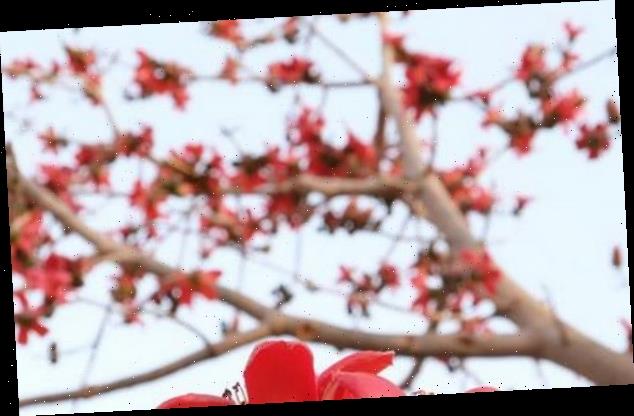The Semal flower is out in Delhi’s spring, in all its red, waxy wonder, and will soon give way to crusty pods and silk cotton
Every year, just when exam time was peaking and the school session coming to a close, I would see, along avenues, a leafless tree with vibrant clusters of red flowers. The child in me just reveled in their beauty, of the waxy, fallen leaves and bare ashen branches, and it was only much later, when my interest in nature was piqued that I started trying to identify trees in Delhi.
At every nook and corner of the city, there lies a majestic tall dry deciduous tree popularly called the Semal (also called the silk cotton tree, the cotton tree, Bombax, Indian Kapok, Shembal). In February, the Semal bares most of its leaves and is filled with clusters of large red flowers with five petals on each of them.
The tree has a silvery bark with the lower sections covered with conical prickles to perhaps deter animals from coming too close. It fashions compound leaves (a leaf consisting of several or many distinct leaflets joined to a single stem) with about five pointy leaflets (sometimes six or seven).
Their fruits resemble woody capsules which ripen and split open in May, bursting open with the intense sun, to release silky fibres and seeds into the air, only to be propagated through wind pollination.
These fibres, though beautiful, are not great for those who have asthma and other respiratory conditions. Semal is quite drought-hardy, and thrives in dry deciduous and moist areas, including the forests, across India, but not in arid zones.
The silk cotton from fruits are often collected to stuff pillows and quilts and collecting rights from trees are often auctioned in Delhi. Semal is known for its ornamental value, but its bark and roots are sometimes used as a tonic and stimulant in traditional medicine practices. A gummy substance collected from the stem is said to be an aphrodisiac and also used to treat stomach disorders, says environmentalist Pradip Krishen, in his book Trees of Delhi.
Ecologically, the tree plays an important role in attracting several creatures like birds, butterflies, bees, and spiders. The flowers are not only a hit amongst nectar-sipping creatures like the Purple Sunbird and bees, but also with frugivorous (fruit-eating) birds like the Coppersmith Barbet. The Indian Grey Hornbill sometimes uses the top branches of the tree as a perch to call out to mates.
Since there are so many insects attracted to the flowers of the Semal, Crab Spiders camouflage themselves in the open petals, lying in wait to pounce on their unfortunate prey. In the early morning, a flock of Yellow-footed Green Pigeons may sit atop, to bask in the sun. These inter-dependencies make Nature what it is — a series of connections built over time.
You can see the Semal in areas like Hauz Khas, Lodhi Road and several other parts of the city, sometimes dropping on cars and streets, covering them in a deep red mess.
They face upwards, so they have a tendency of retaining rainwater fall with a heavy plop. These are the wonders of watching a tree unravel its magic.
The writer is the founder of NINOX – Owl About Nature, a nature-awareness initiative. He is the Delhi-NCR reviewer for Ebird, a Cornell University initiative, monitoring rare sightings of birds. He formerly led a programme of WWF India.
Source: Read Full Article
